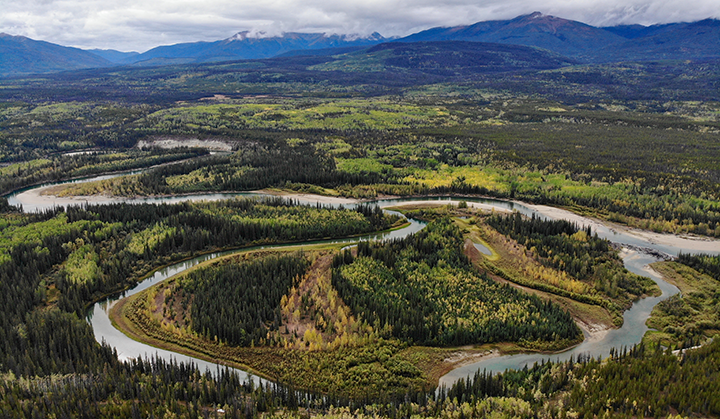Master’s project will help proactively identify priority areas for conservation in Tsay Keh Dene Nation territory to balance nature and people’s needs
More than ever, wildlife and people are having to deal with significant environmental change. As we collectively navigate drastic shifts in day-to-day life through a global pandemic, we are also seeing the effects of climate change in our communities and wild places.
Through challenges and changes, it is important to push forward with work to connect and protect habitat across the Yellowstone to Yukon region. Critically, this means smart planning and decisions that protect the places wildlife and people need most. This is where the research of one of Y2Y’s 2020 Sarah Baker Memorial Fund recipients will lend a helping hand.
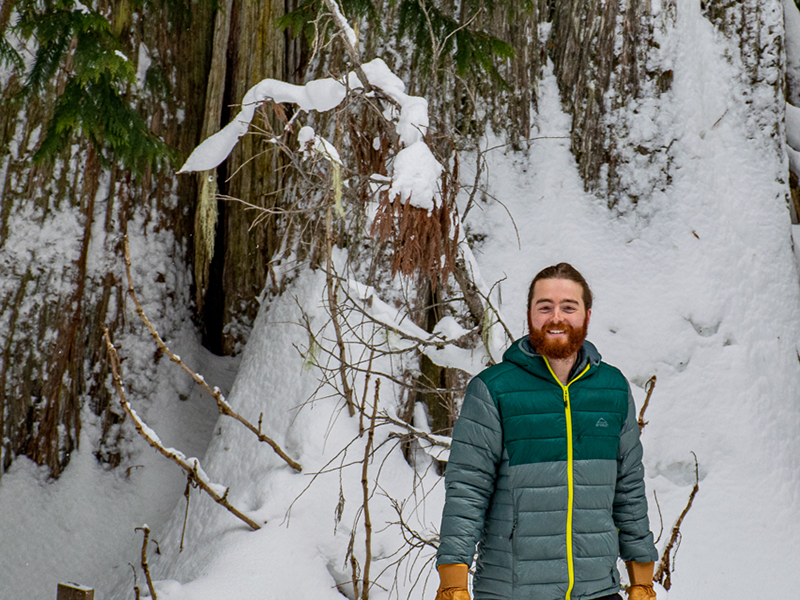
Meet Christopher Morgan, a Master’s student at the University of Northern British Columbia (UNBC). Chris is working on a collaborative “systematic conservation planning” project – a holistic way of assessing a landscape to identify which places hold the greatest conservation value.
This will involve mapping landscape features, such as habitat for key wildlife species and cool safe havens from climate change, into a conservation planning tool. By dividing up the study area’s landscape using a grid, the tool is able to efficiently select grid cells that contain many overlapping features or a few rare features; these selected cells are considered high priorities for conservation.
Chris’ research is within the territory of and in collaboration with the Tsay Keh Dene Nation, nestled in B.C.’s Rocky Mountain Trench just northwest of the Peace River.
You may also know this area as part of the Muskwa-Kechika Management Area, an important northern anchor in the Yellowstone to Yukon region, and one of the largest wild areas in the Canadian Rocky Mountains. This place is also a refuge for grizzly bears, caribou, moose, wolves, wolverines, native trout and Stone’s sheep.
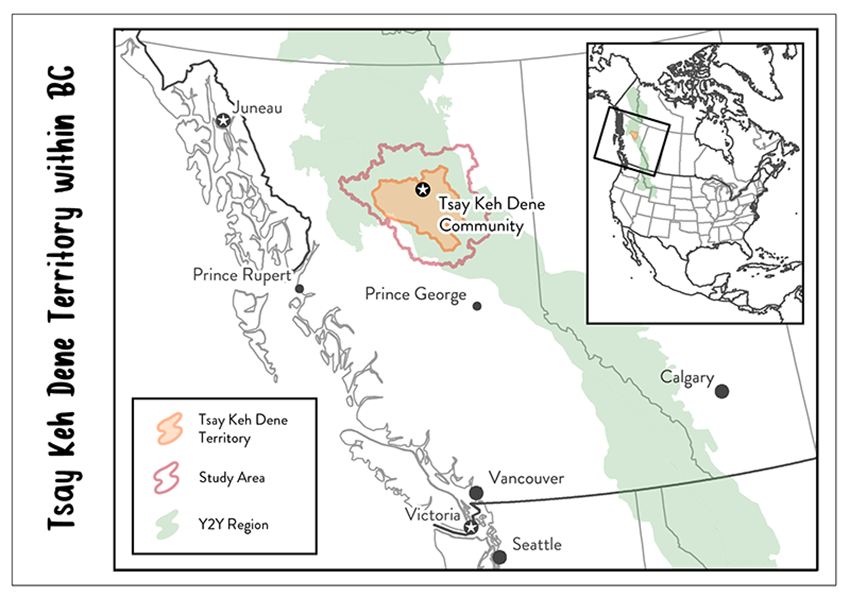
Chris’ supervisor and Y2Y board member, Dr. Pam Wright, was first approached in 2018 by members of Chu Cho Environmental – an environmental research and consulting company wholly owned by the Tsay Keh Dene Nation – after seeing presentations about conservation planning in the Peace. Tsay Keh Dene Nation wanted a more holistic way to identify priority areas for conservation in their territory.
“Chris’ work is developing approaches to not only incorporate community-sourced data in conservation planning, but also Indigenous values, priorities and perspectives throughout the process,” says Dr. Wright. “In working with our skilled partners, the intention is that they will be able to use the model over the long term and continue to adapt, expand and apply it.”
The Tsay Keh Dene Nation’s community is one of the most remote villages in B.C., surrounded by an incredible diversity of wild lands, waters and wildlife. But this area is vulnerable to continual industrial development as commonly seen in B.C.’s resource-rich landscapes.
“This research helps to enshrine invaluable community knowledge in a data product that informs critical decision making on the landscape. Now more than ever, we need intelligent systems that can keep pace with rapid and unforgiving development in the territory.”
Evan Mackinnon, manager Tsay Keh Dene Nation Lands, Resources and Treaty Operations department.
When members of the community are initially consulted about new development in their territory, it can be a challenge to determine how a proposed project and its impacts fit into the larger landscape puzzle – especially in a system that necessitates western science-based decisions.
In collaborating with biologists at Chu Cho Environmental, Chris will look at high value habitat for “umbrella” wildlife species such as grizzly bears and caribou in Tsay Keh Dene territory, as well as which areas are important for helping these species adapt to climate change.
For example, mountain caribou need access to winter food sources such as lichen, while grizzly bears thrive on huckleberries that spring up after a forest burns. Understanding where these critical habitats overlap with areas predicted to be least affected by climate change is effective in making informed conservation decisions.
“Chris’s vision is prudent with careful acknowledgement of climate change and evolving landscapes. Tsay Keh Dene Nation is proud to support this project and congratulates Mr. Morgan on receiving his award,” says Evan Mackinnon, manager Tsay Keh Dene Nation Lands, Resources and Treaty Operations department.
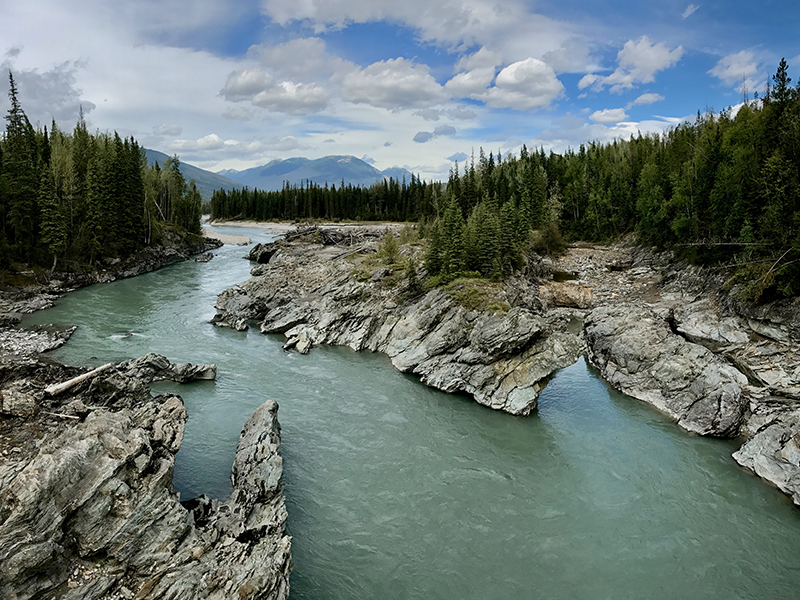
Starting a new research project and building important relationships during a time when travel is discouraged is anything but easy; nonetheless, Chris spent 2020 working remotely with First Nations partners to identify goals and compile data. Now, he will work to incorporate those data into the conservation planning tool.
“This research helps to enshrine invaluable community knowledge in a data product that informs critical decision making on the landscape,” adds Mackinnon. “Now more than ever, we need intelligent systems that can keep pace with rapid and unforgiving development in the territory.”
The Tsay Keh Dene Nation’s members’ deep understanding and knowledge of the landscapes over generations, as well as the expertise of biologists with Chu Cho Environmental, is key to the project’s success.
Alongside environmental data such as key wildlife habitat, the community’s values and priorities are equally critical for identifying potential areas for conservation within the planning tool. In other words, inputting this data will enable the conservation planning tool to identify the parts of the landscape with the highest conservation value in a way that balances the needs of nature and people.
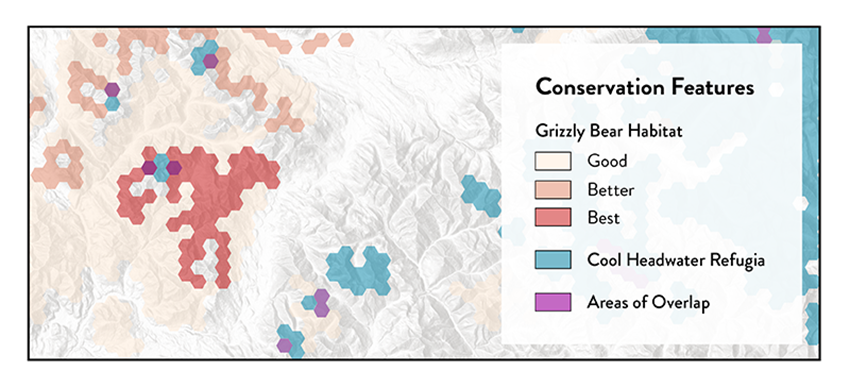
“What I think sets this project apart is that we’re not just seeking input from the Tsay Keh Dene Nation at one stage; rather, they initiated this research and are the foundation of this project,” says Chris. “It’s vital that the Nation’s values, both spiritual and cultural, are imprinted at each step along the way, and I’m really excited to be a part of that.”
The support of Y2Y’s Sarah Baker grant will help with Chris’ research both in the short- and long-term.
This will include keeping the community informed on work being done by Chu Cho Environmental and UNBC. To do this, Chris will create what he calls a “storytelling poster series” – an overview of the project, the species and landscape features it will look at, and the final results.
Additionally, the mapped data could help with developing a management plan for the Ingenika Indigenous Protected and Conserved Area, which is centered on the Ingenika watershed. This is an area with great ecological, cultural, and spiritual importance to the Tsay Keh Dene, and one of the last remaining intact landscapes in their territory.
“It’s important to me that the research I do today helps lay the foundation for broader conservation efforts in the Tsay Keh Dene Nation’s territory,” says Chris.
“By considering how climate change may affect this landscape moving forward, it is my hope that this work helps the Nation feel more prepared to make land-use decisions that support biodiversity and the community’s needs into the future.”
The Sarah Baker Memorial Fund supports early-career researchers whose projects advance Y2Y’s conservation strategy and result in tangible benefits within the region. Sarah Jocelyn Baker’s appreciation for the natural world and ability to find solutions resonate with the aspirations and vision of Y2Y. We are honored to carry her spirit forward through the Sarah Baker Memorial Fund. Thanks to a gift from her extended family, Y2Y can offer grants to graduate students and postdoctoral fellows pursuing environmentally related studies in any post-secondary institution in Canada or the U.S.
